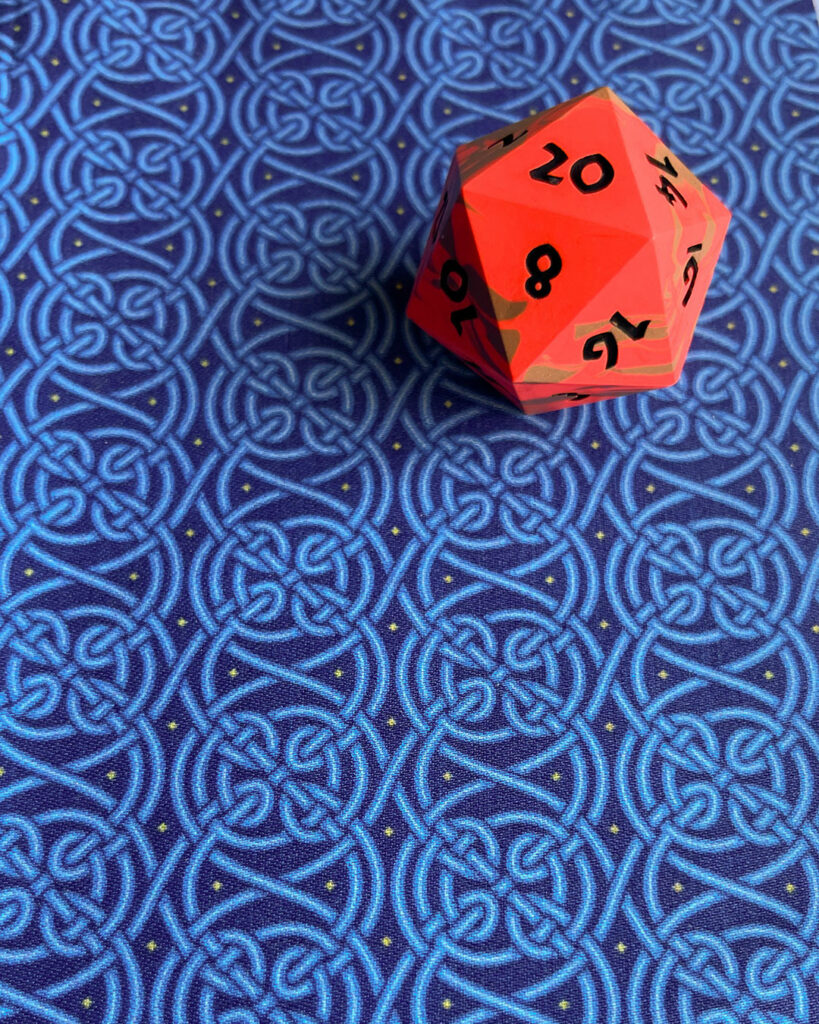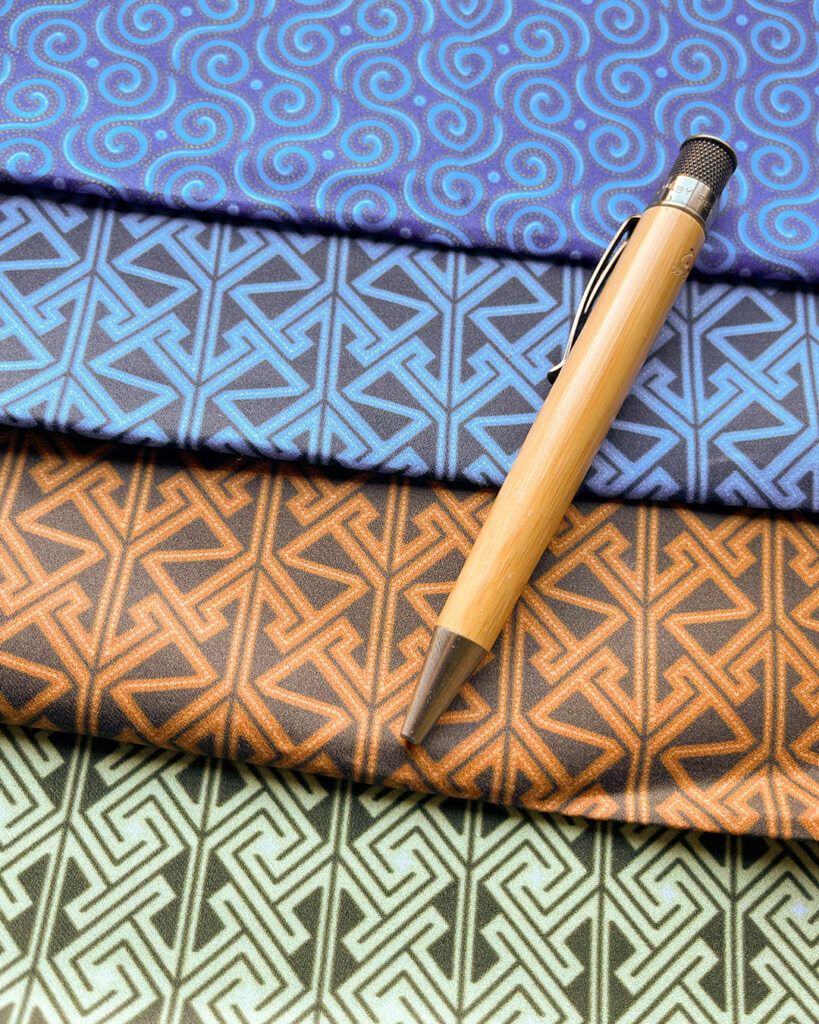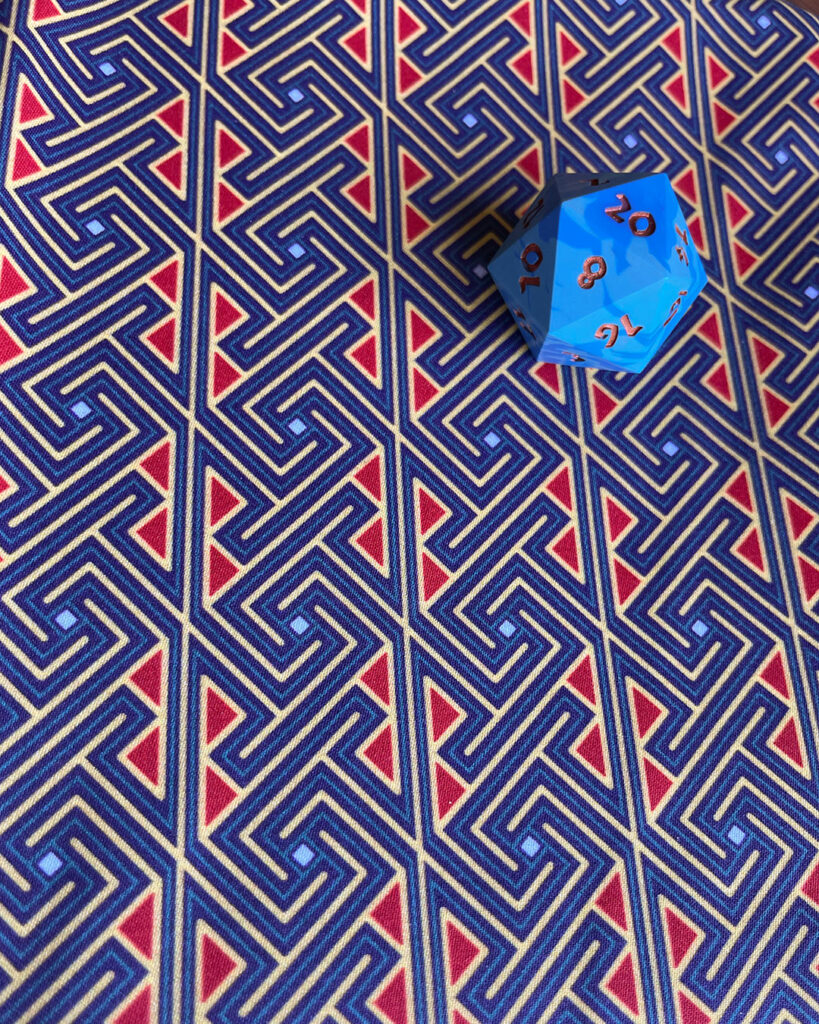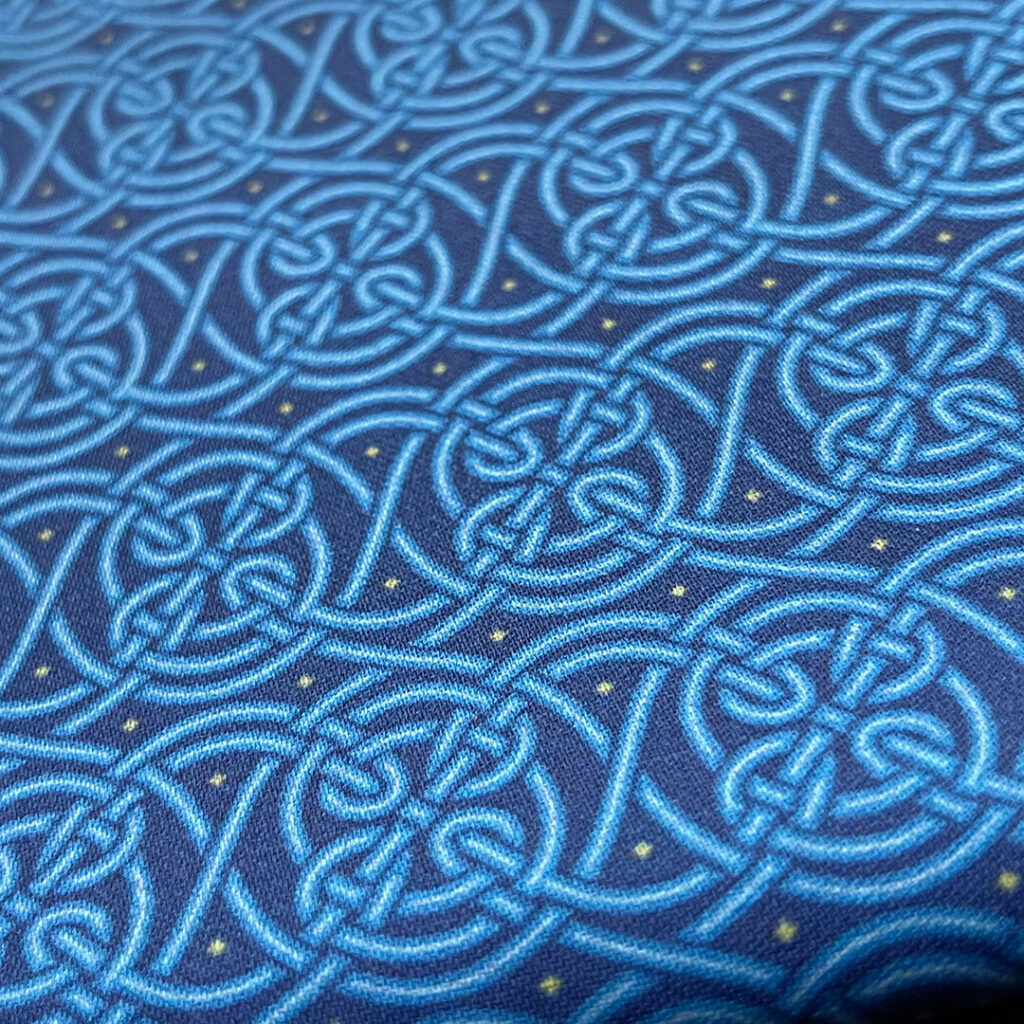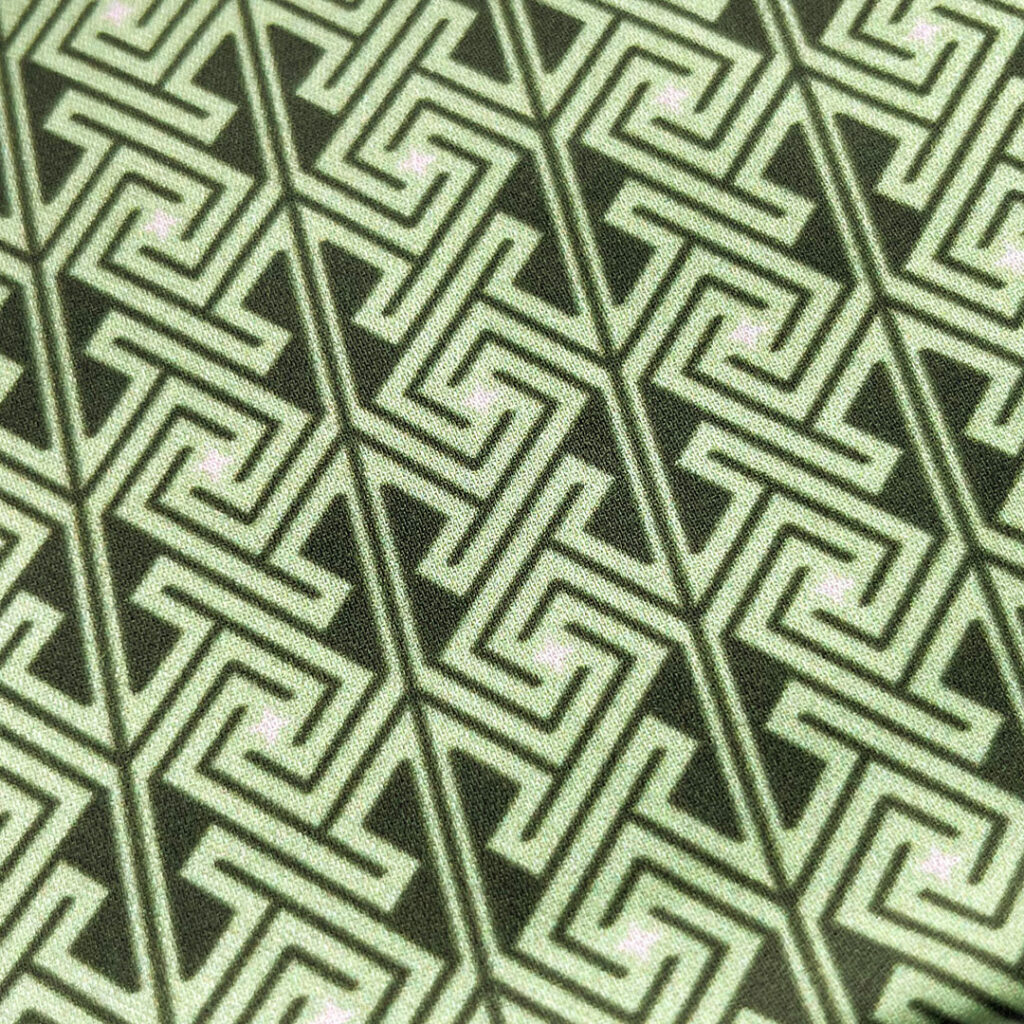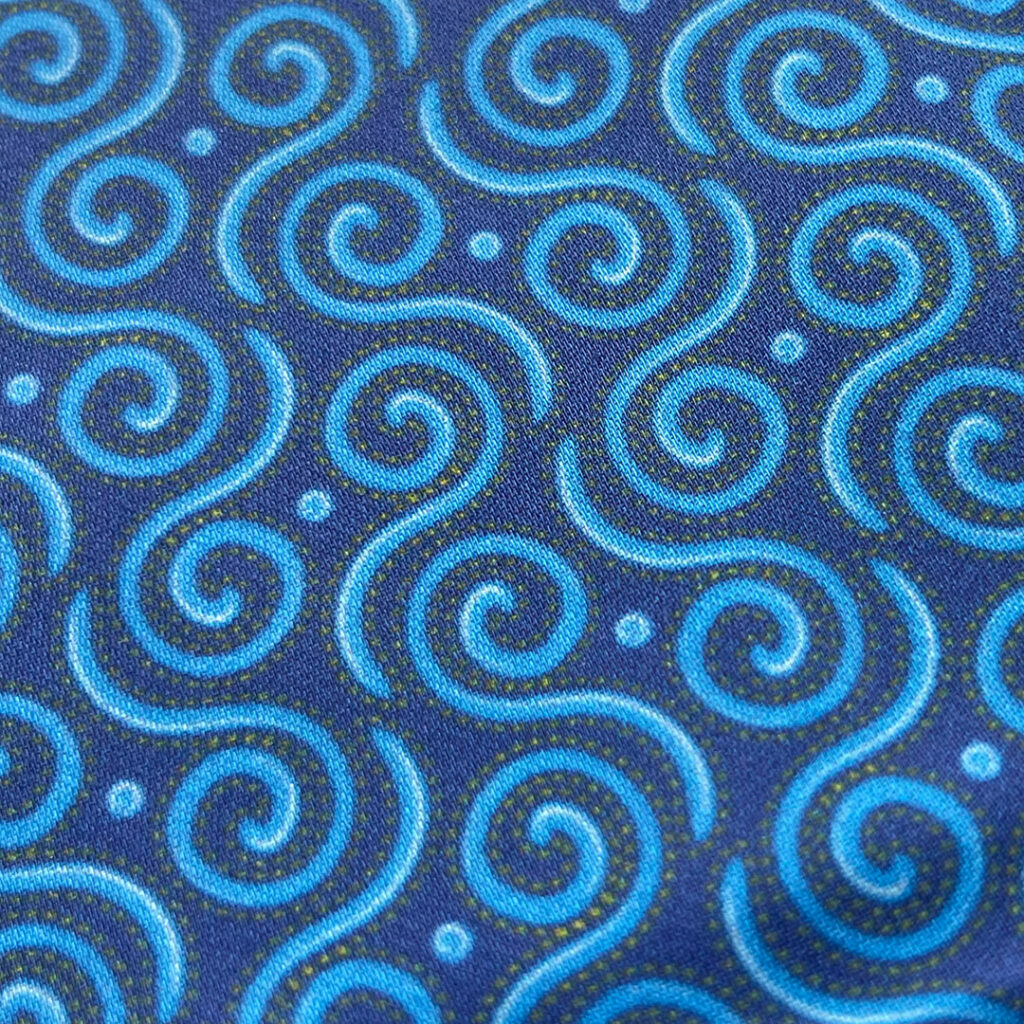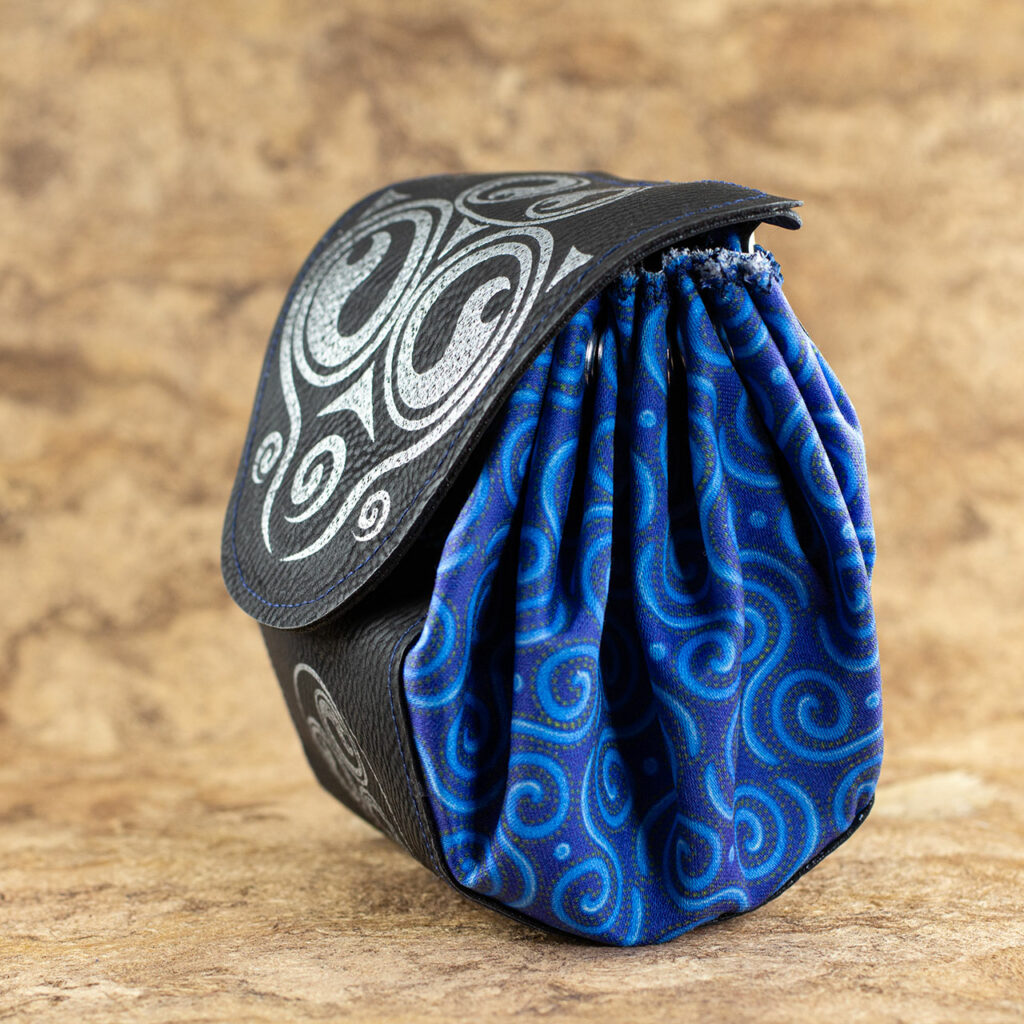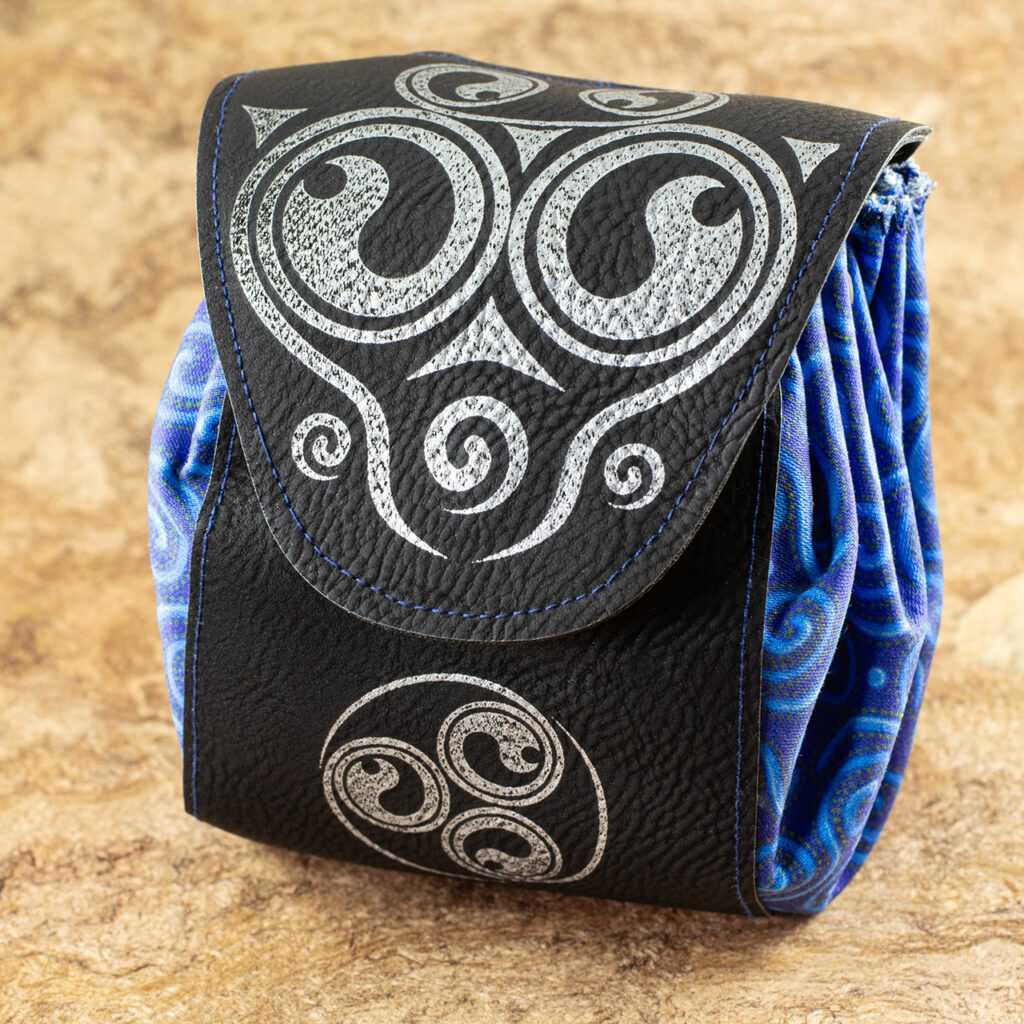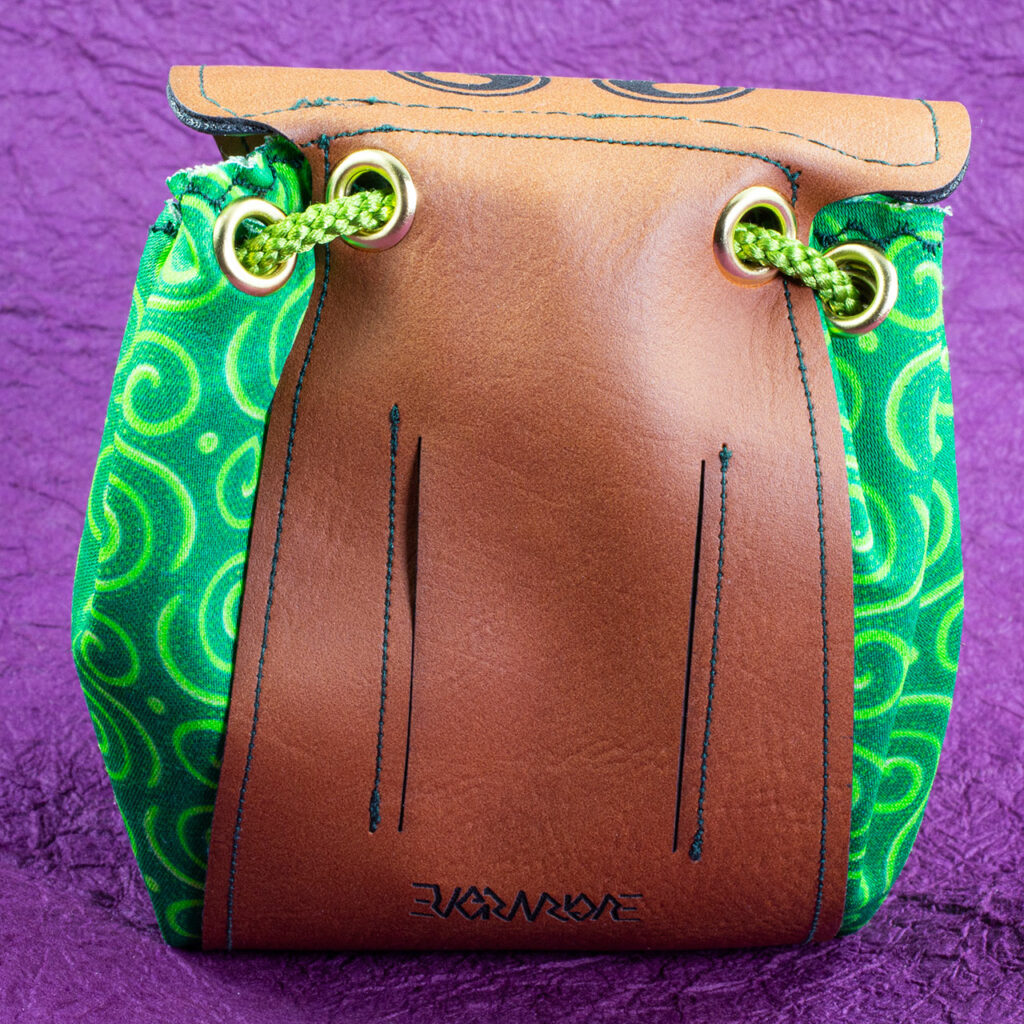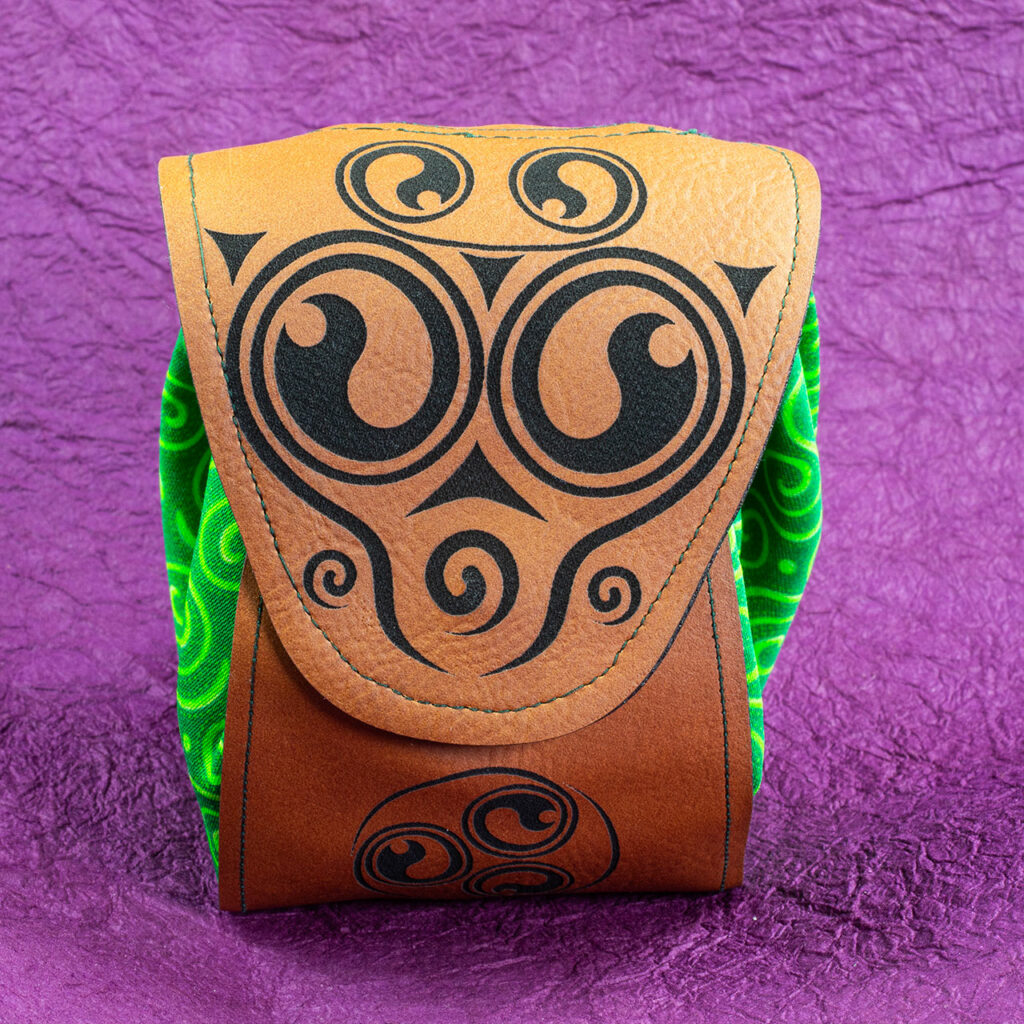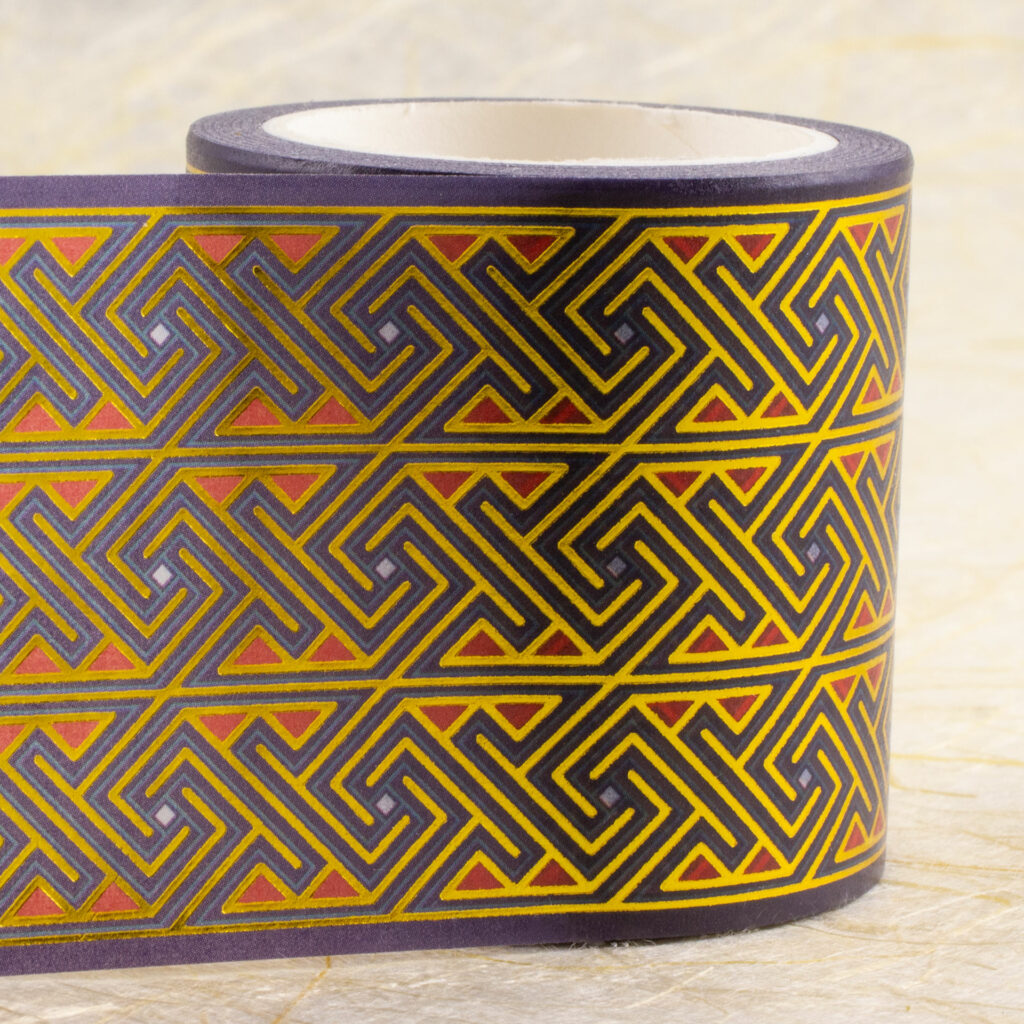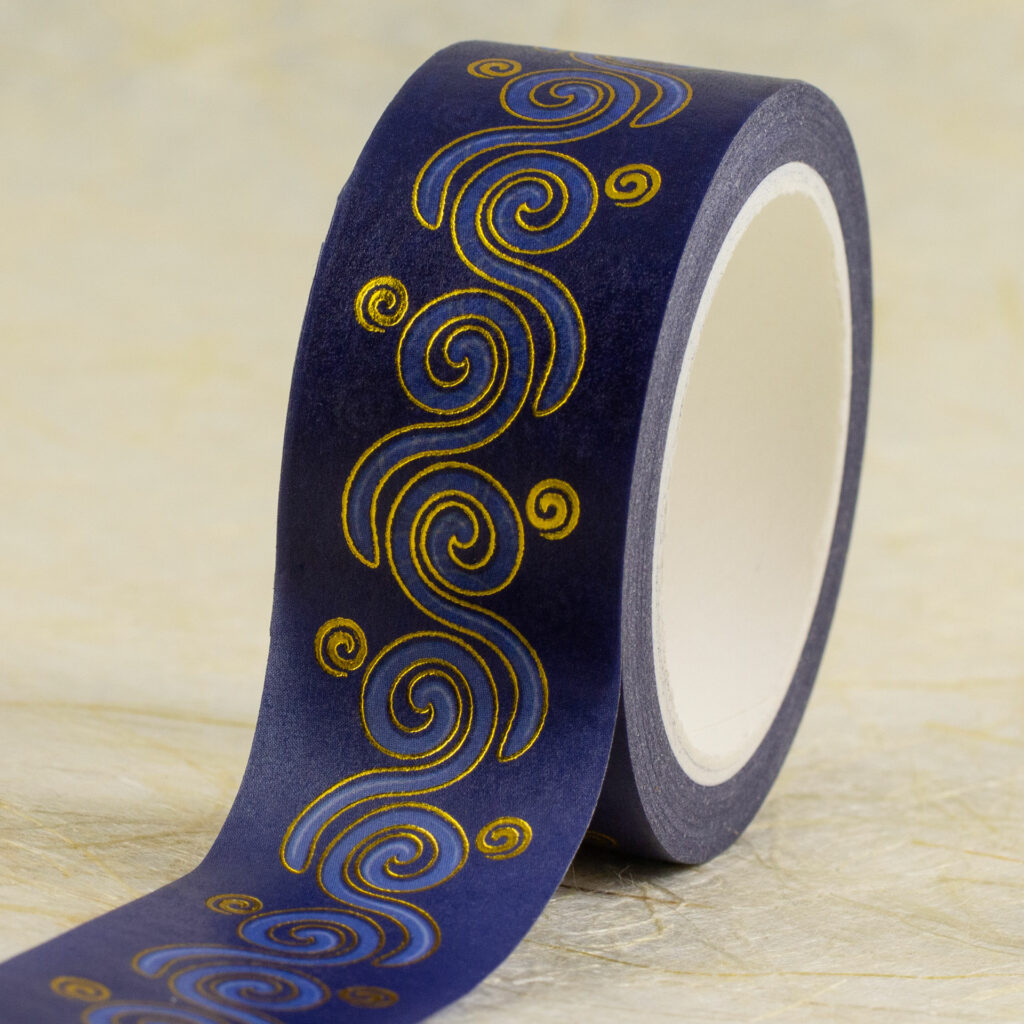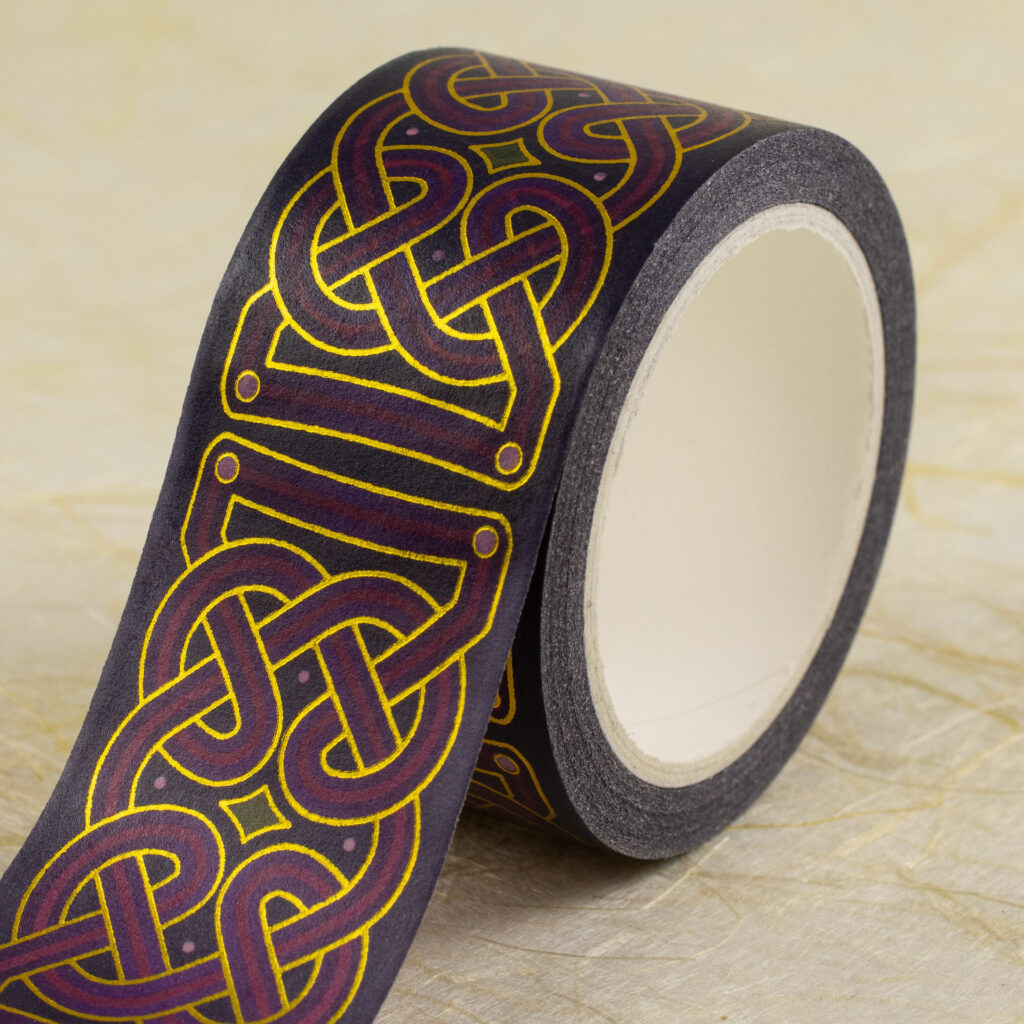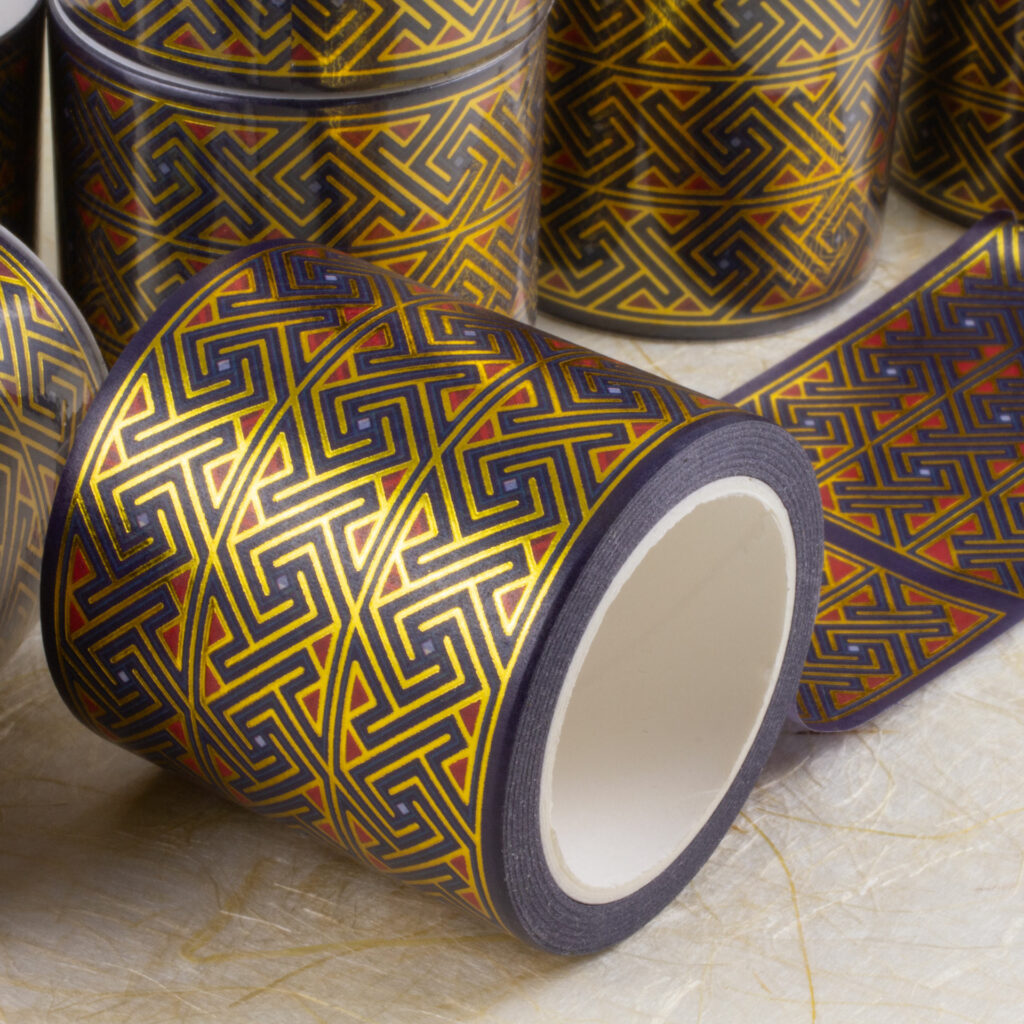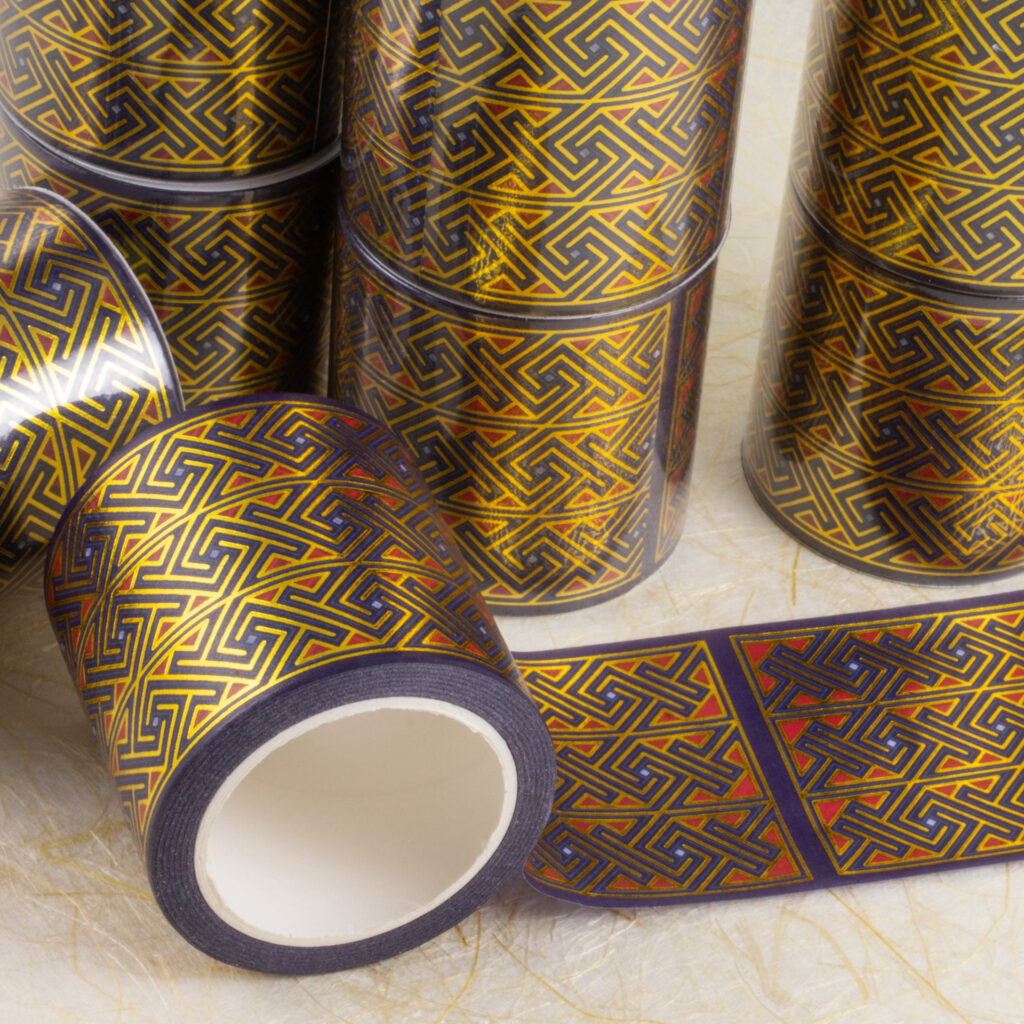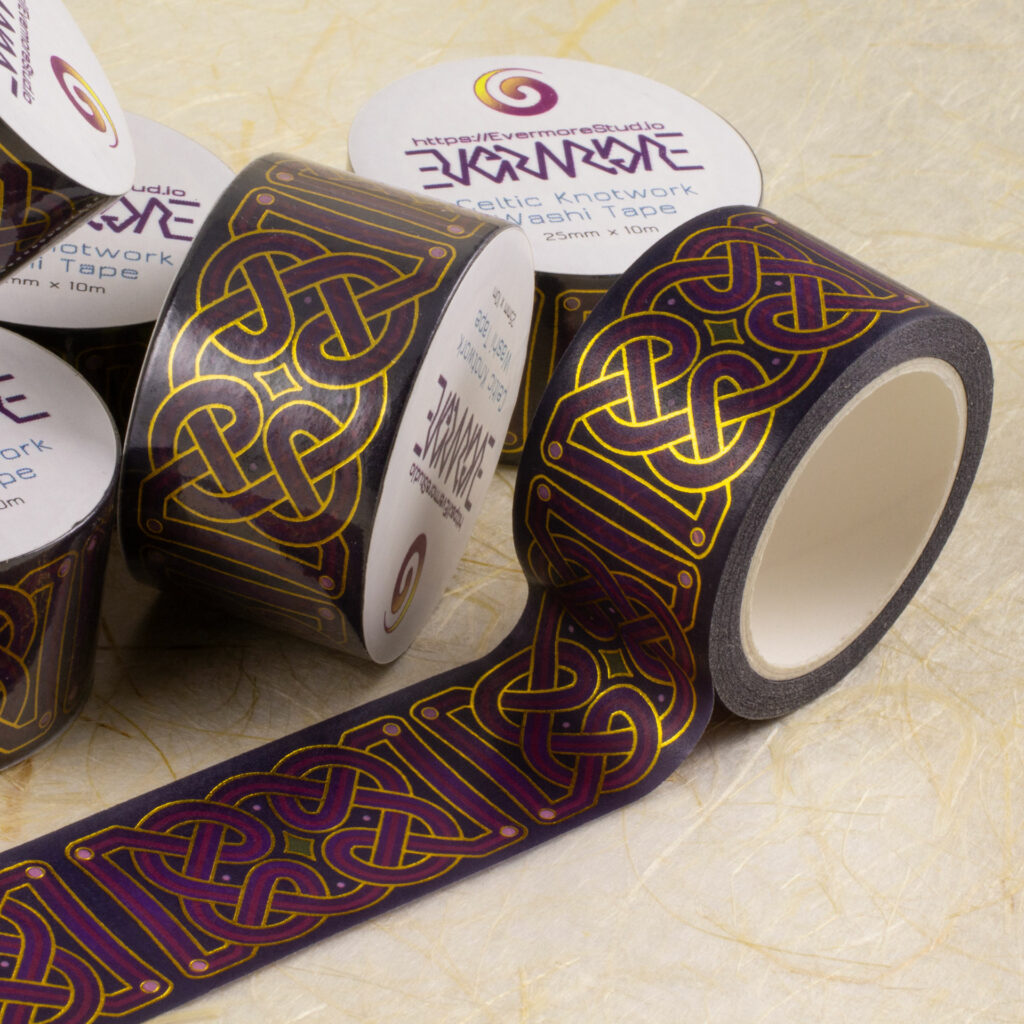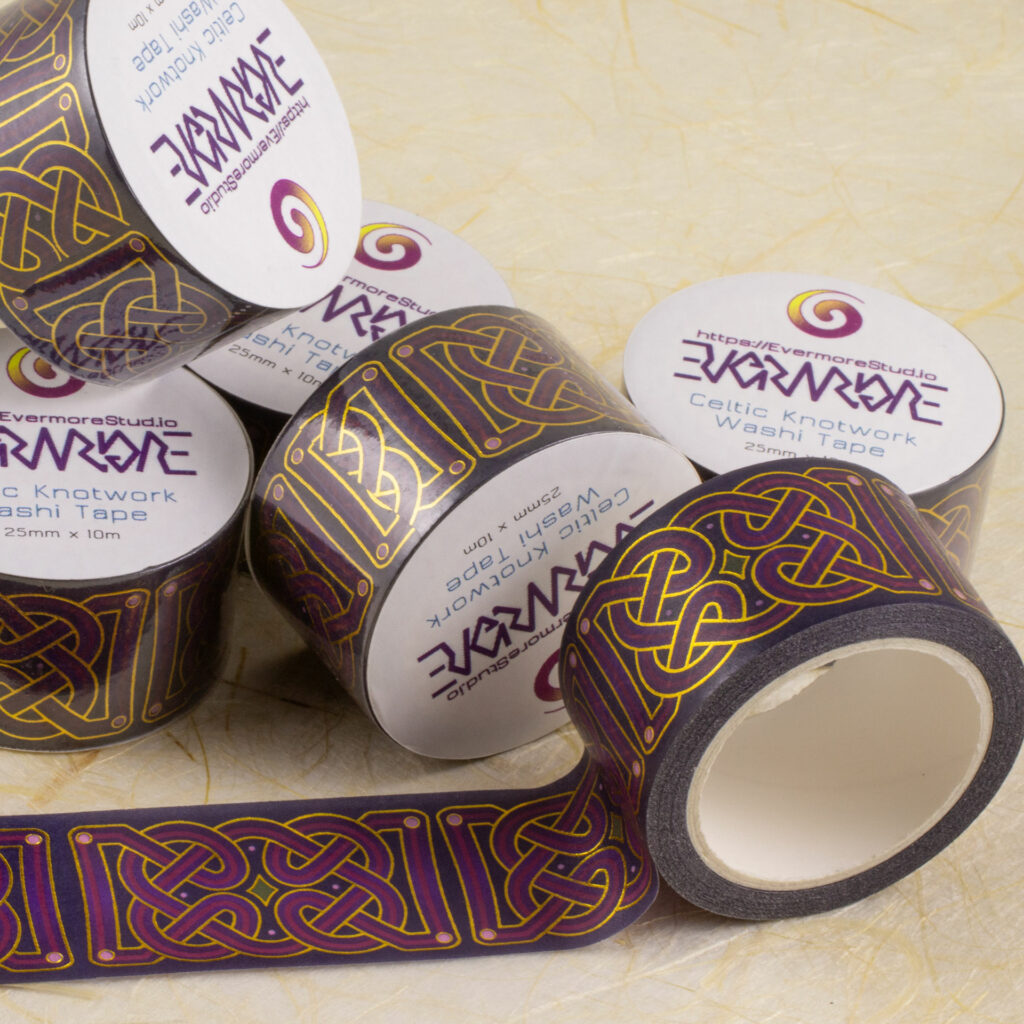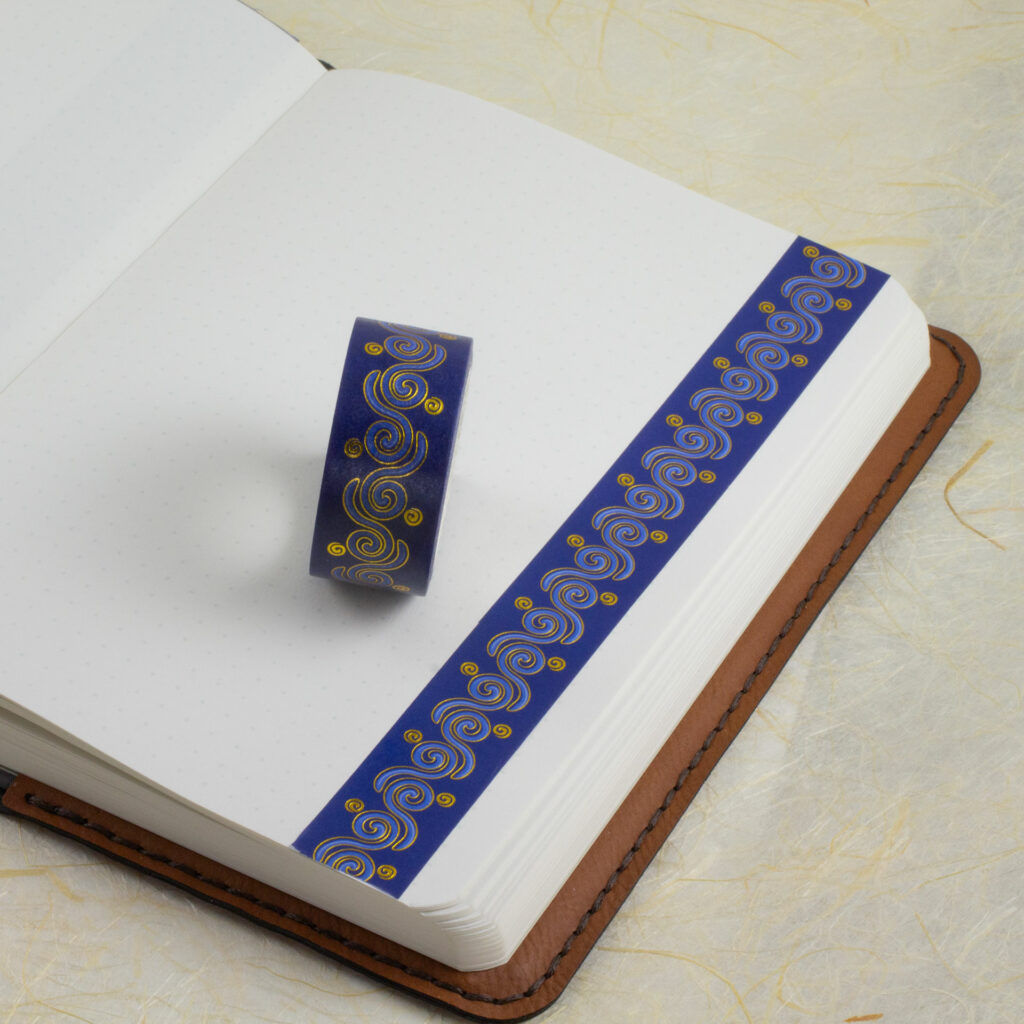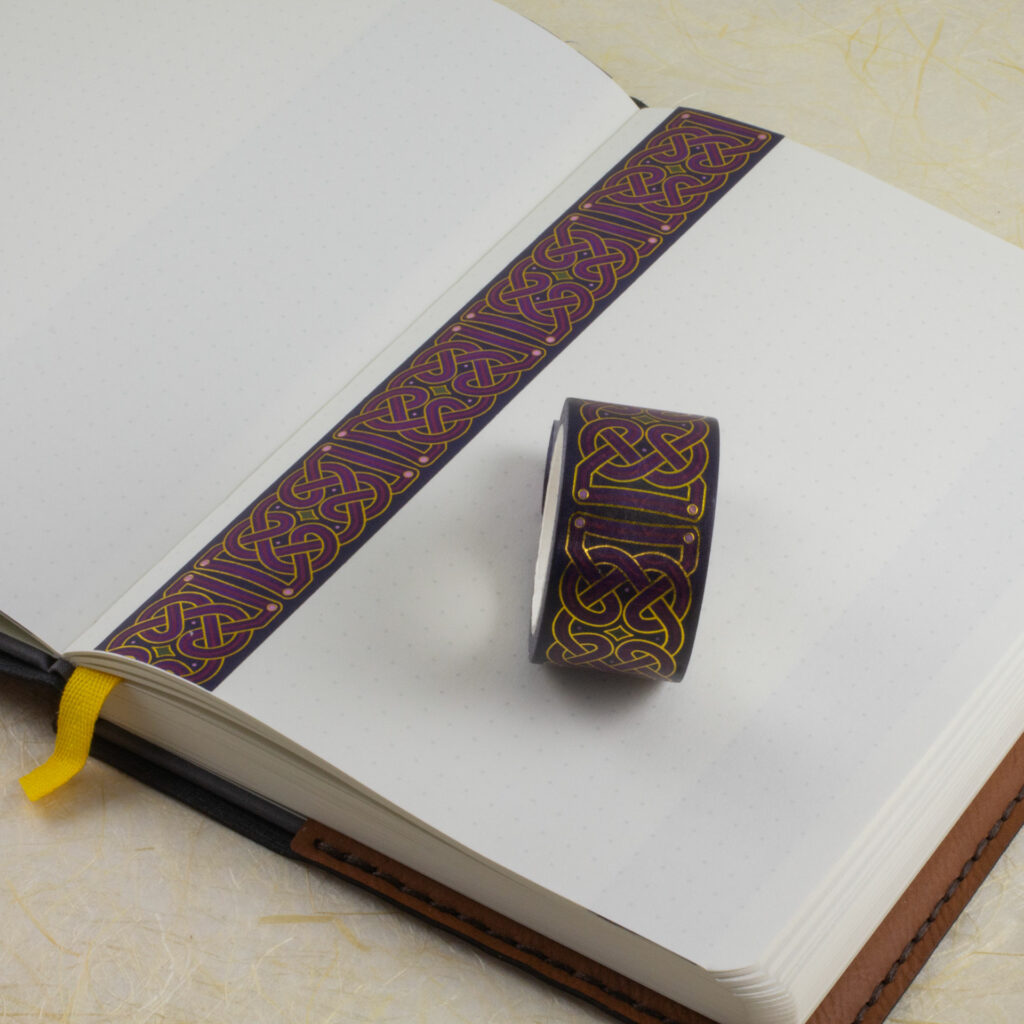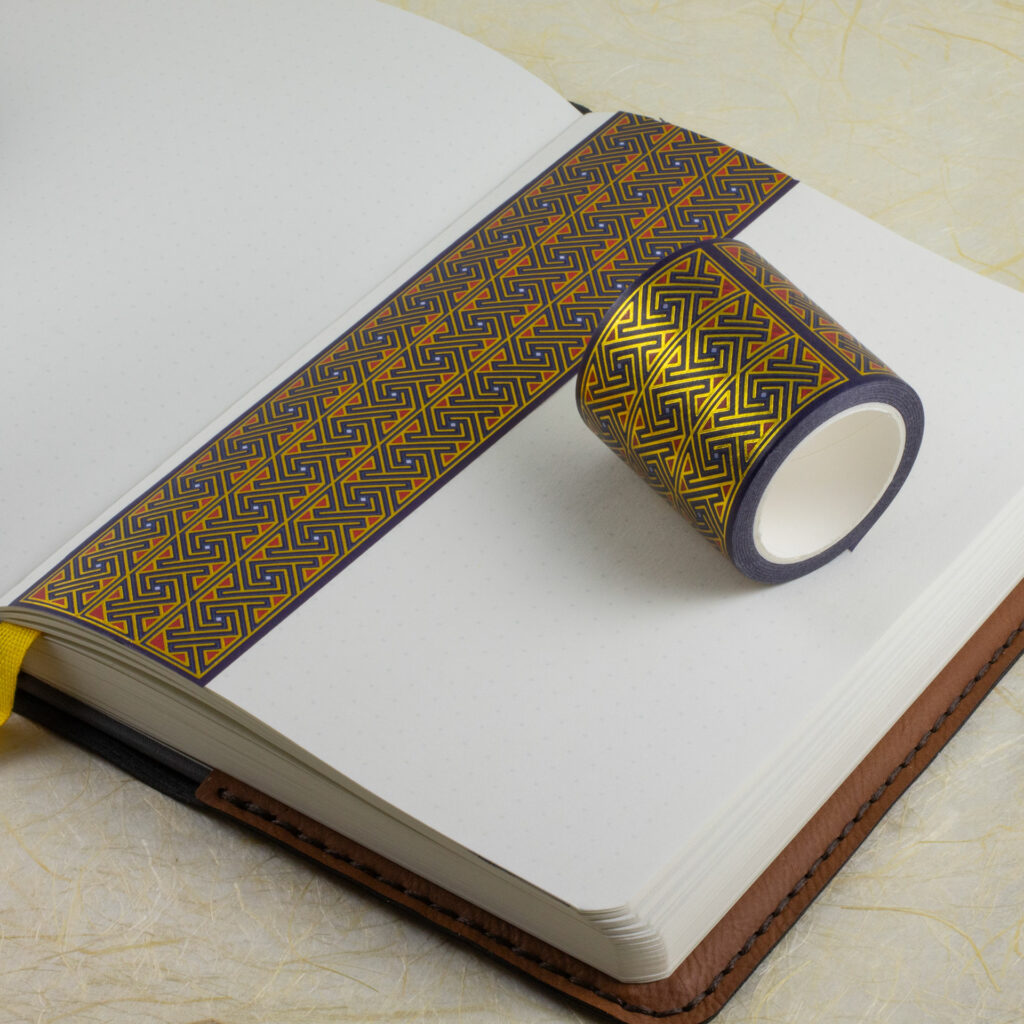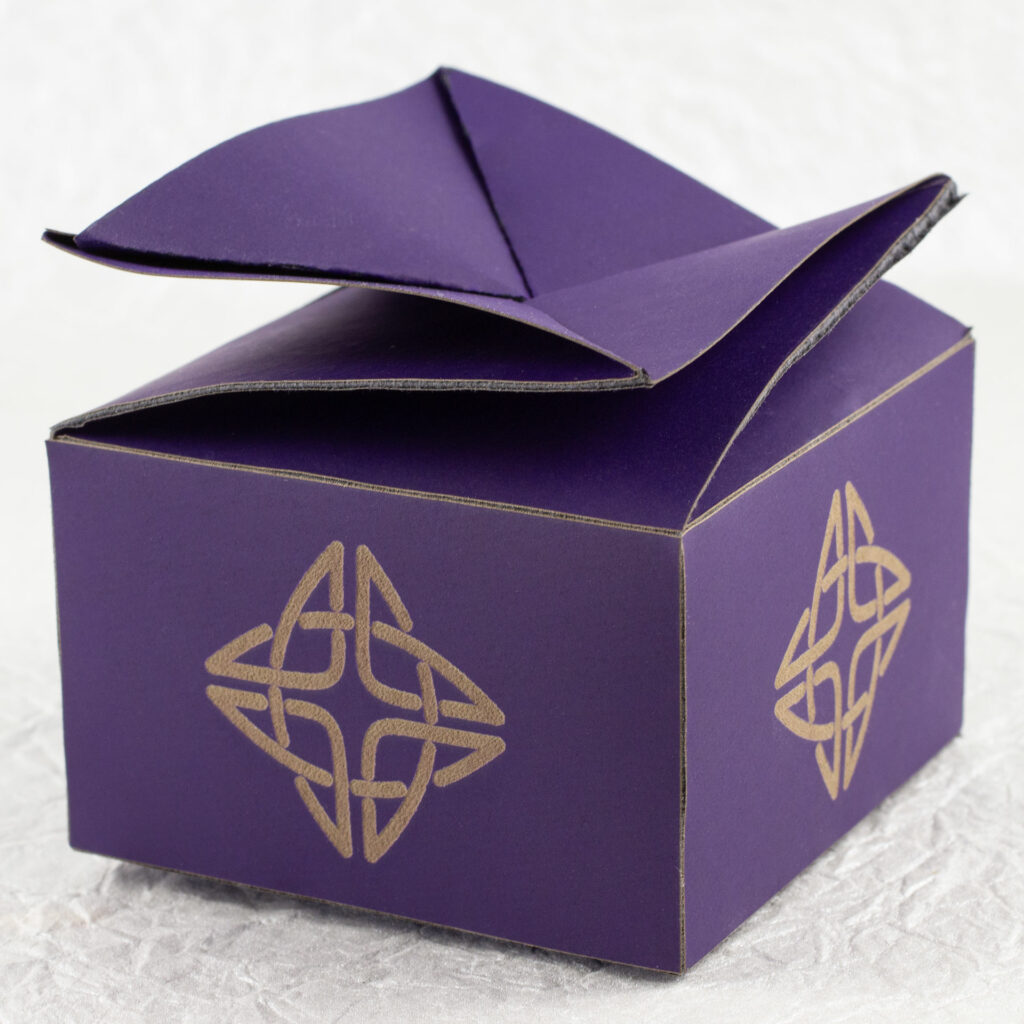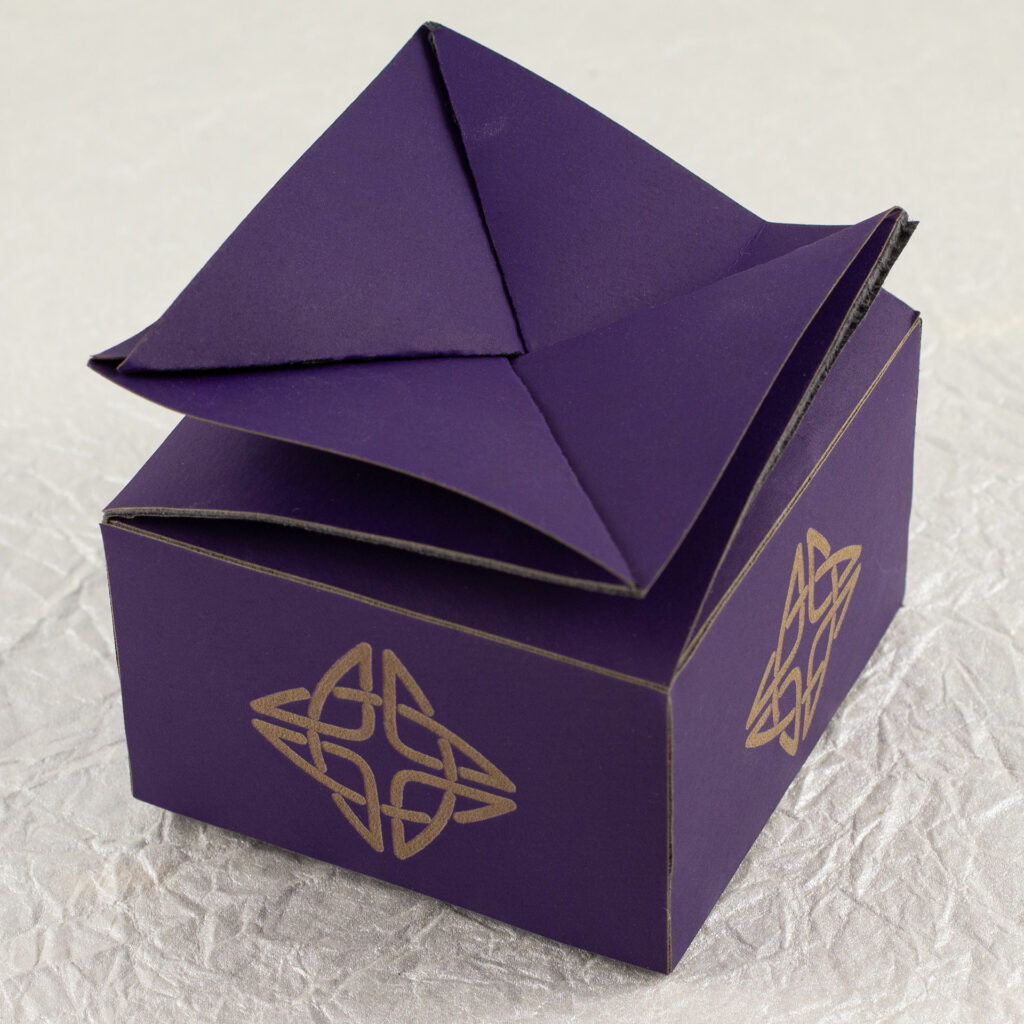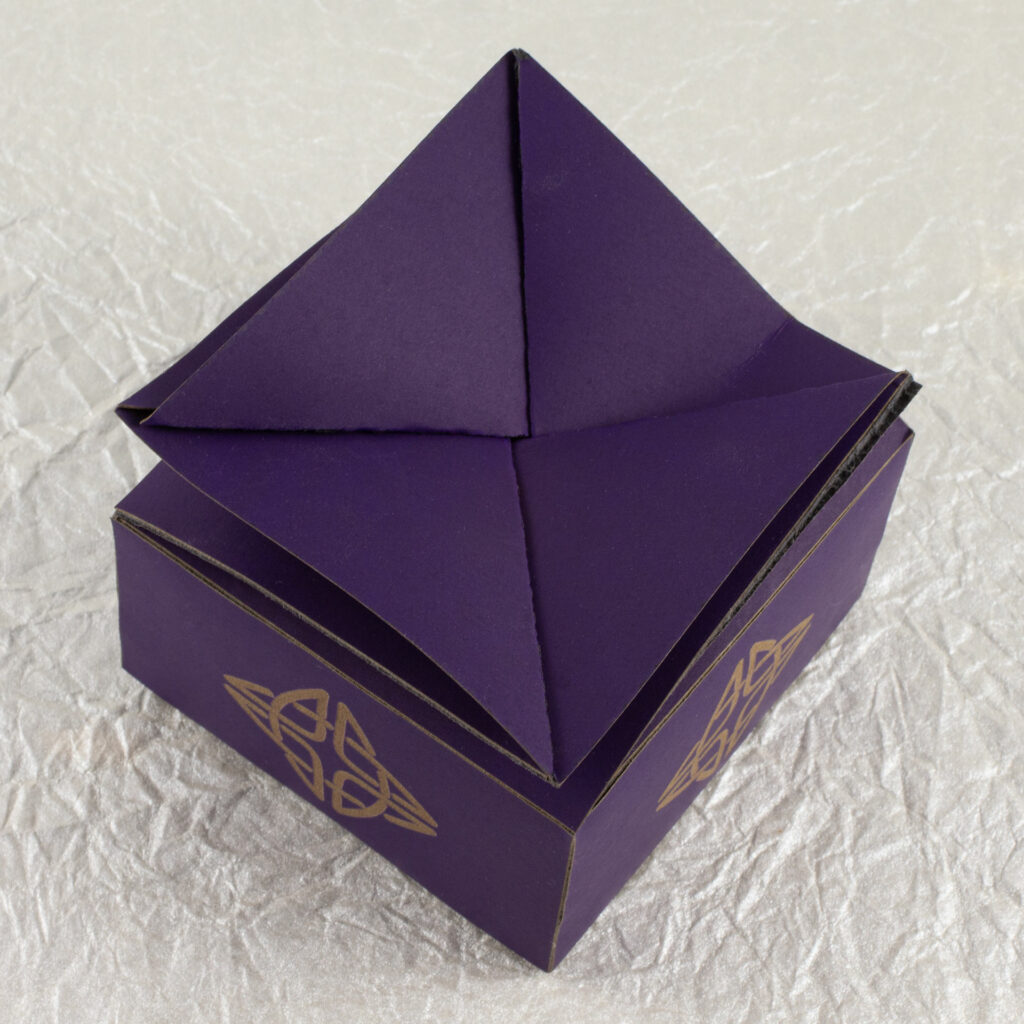Celtic Design Fabric
I finally got around to making a Celtic knotwork / interlacing fabric design to go with my Celtic key pattern and spiral designs. This design produces an endless panel of knots. Getting the knots absolutely perfect to make seamless tiles is a fun challenge.
I posted some bags I made (pouch with green spirals, pouch with blue spirals, and an azuma bukuro style dice bag) with a few of the fabrics I made before. I hadn’t posted about the fabrics specifically, though.
I have been adding these to my list at the fabric printer in case anyone else has a use for them.
Knotwork Frog Print
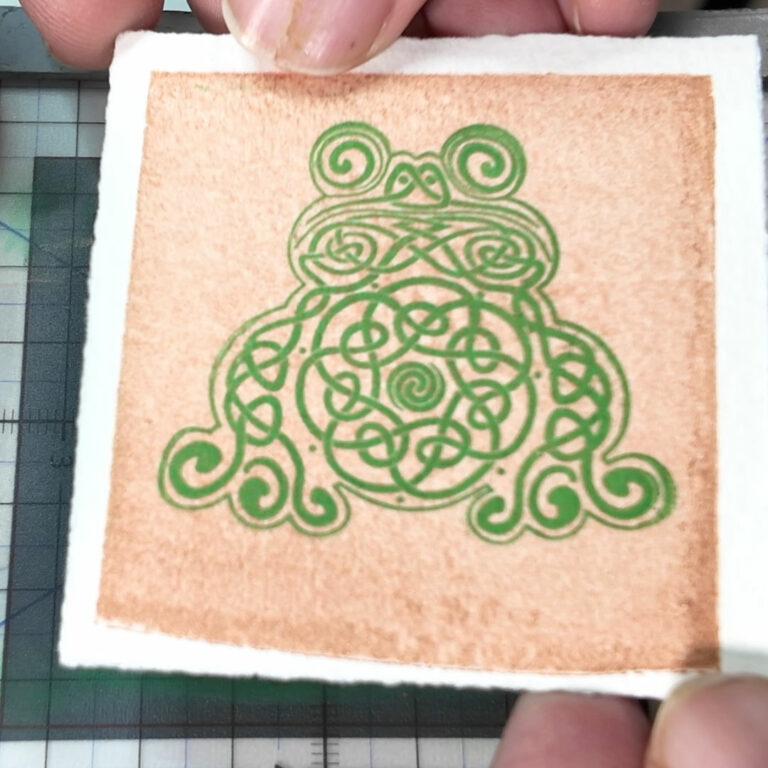
I finally got a chance to play with my new Open Press Project Postcard Printing Press! I cut a plate with this new knotwork frog I designed, and got some pretty good results after a little fiddling. After starting on this, I noticed that frogs seem to be bubbling up out of the collective unconscious a lot right now. I wanted to join the Open Press print exchange, but ran out of time to get prints to them. Maybe next year!
One minute printing video:
Celtic Key Pattern Heart Pepakura
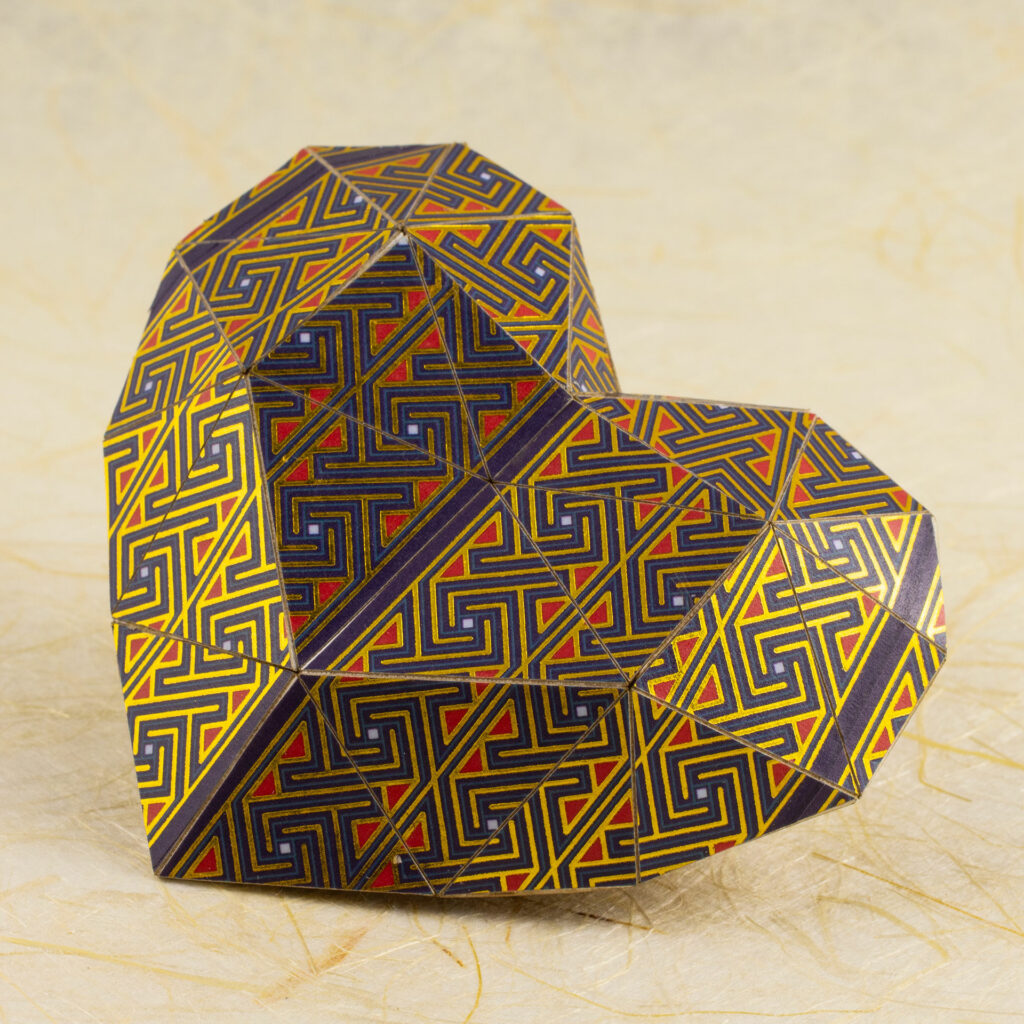
Following up on last year’s Valentine’s day heart card, I wanted to do some paper craft with the new washi tape. I thought the wider key pattern would look good on a low-poly-style pepakura paper heart.
I also made a one-minute video of making it:
More Celtic Art Washi Tape
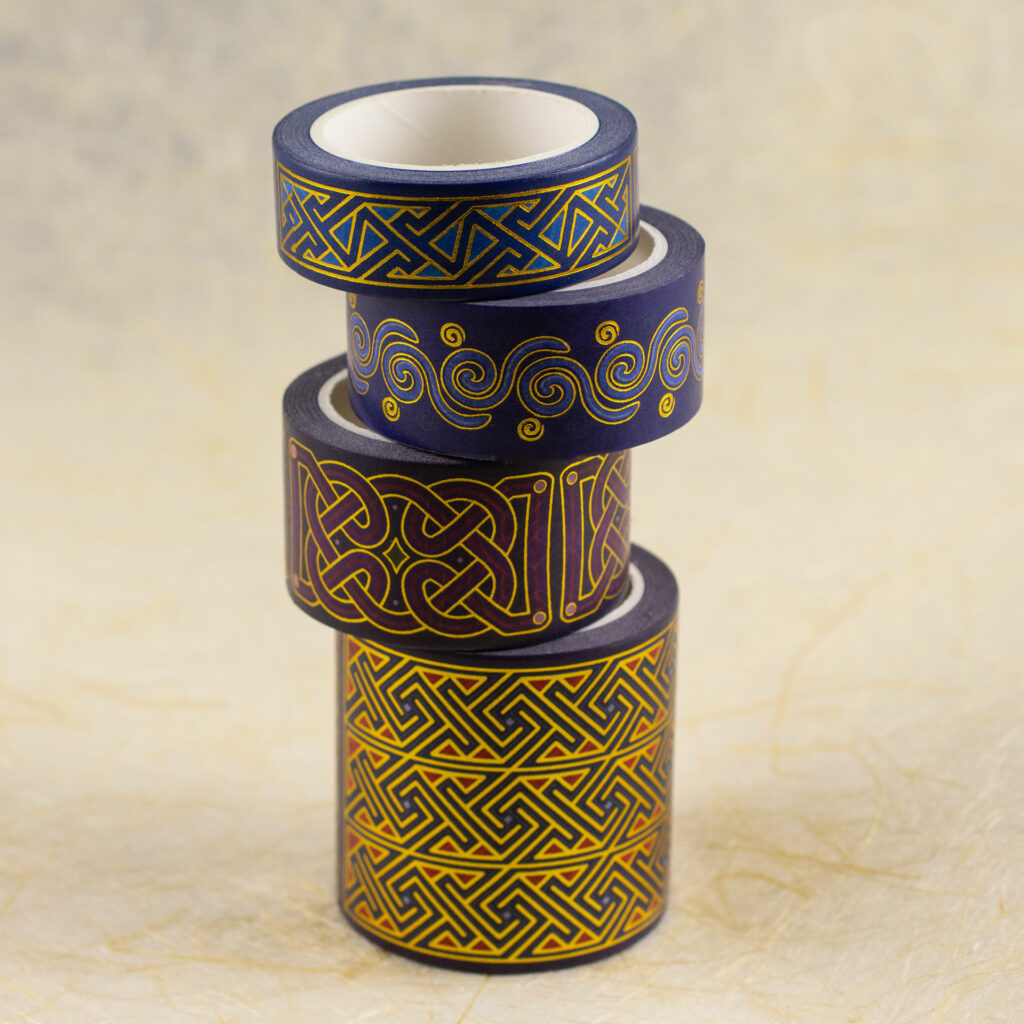
I couldn’t resist designing some more Celtic art washi tape. I did another key pattern, much wider this time (45mm), in purple and red (with some pale blue accents). I made a variant of my Spirals design (similar to the Spiral Flow fabric I did) in shades of blue. I also did a riff on a classic Celtic knotwork/interlacing design in shades of purple (with a green accent). All have gold foil outlines and accents.
If you are into it, I made enough to share. The new washi tapes are up in the shop, individually and in a discounted bundle.
Chibitronics Intervew
Chibitronics interviewed me for a Meet the Maker feature on their blog! If you want to know more about me, my background, my process, and what I do, check it out.
Purple Twist Top Box
After making hardwood gift boxes for the 20-sided dice I made to give as holiday gifts, I decided they needed an additional wrapping to protect them, and to create a reveal for the wooden boxes. I cribbed the closure for this box from a classic Japanese product packaging design. The Celtic knot on the sides is the same one I used for the silver medallions on the wooden boxes. These were cut on the laser from the dwindling supply of large sheets of the “Curious Skin” stock.
Folding and spin video:

